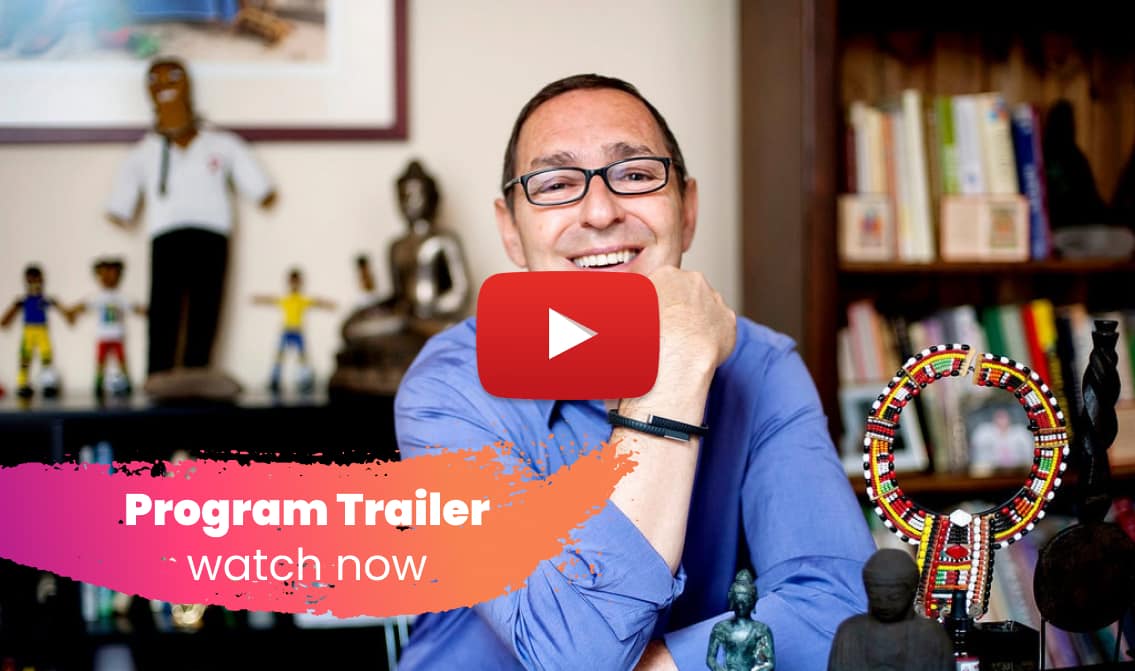The Paleo Diet Revised Book Summary
For those seeking a natural way
Loren Cordain’s The Paleo Diet Revised reaches out to those who feel overwhelmed by modern dietary complexities. It’s a guiding light for individuals seeking simplicity in their meals, reminiscent of our ancestors’ way of eating. This book is especially resonant for those who yearn to reconnect with a more natural, primal way of nourishing their bodies.
To fight muliple health conditions
The Paleo Diet Revised confronts the health conditions that deeply affect our society, including obesity, diabetes, and heart disease. These conditions, often lifestyle-induced, are at the forefront of the health crisis many face today.
Loren Cordain offers a return to a diet that predates these modern ailments, suggesting a natural solution to a modern problem.
A path toward health goals
Readers of The Paleo Diet Revised are seeking transformation. They are looking for a sustainable path to weight loss, increased energy, and overall vitality. The book promises a journey back to the basics of human nutrition, providing a clear path to achieving these health goals through a diet that has sustained humans for millennia.
Central themes of The Paleo Diet Revised
The key themes of The Paleo Diet Revised revolve around eating whole, unprocessed foods that our Paleolithic ancestors would have consumed. The book emphasizes the importance of quality meats, fresh vegetables, and fruits while excluding grains, dairy, and processed foods. It’s a call to embrace a lifestyle that aligns with our genetic makeup for optimal health.
Key takeaways from the book
The Paleo Diet Revised stresses the importance of consistency and commitment. Loren Cordain advocates for making a permanent shift in dietary habits rather than seeking quick fixes.
The most important takeaways include understanding the impact of food on our bodies, the benefits of a diet rich in natural foods, and the elimination of harmful processed foods for lasting health and well-being.
Top 15 Habits in The Paleo Diet Revised
A journey toward better health involves adopting new practices that align with our ancestral dietary patterns. These habits are designed to combat common modern-day health issues such as obesity, heart disease, and metabolic disorders. By integrating these specific habits into daily life, individuals can move closer to achieving the healthful outcomes promised by a Paleo lifestyle.
- Eliminate Processed Foods
Removing processed foods from your diet reduces exposure to added sugars, unhealthy fats, and artificial ingredients that contribute to chronic diseases. - Consume Lean Proteins
Prioritizing lean proteins supports muscle development, aids in feeling full longer, and provides essential nutrients without the added fats that can lead to heart conditions. - Eat a Variety of Vegetables
A diverse intake of vegetables ensures a broad spectrum of vitamins and minerals, supporting overall health and helping to prevent nutrient deficiencies. - Include Healthy Fats
Healthy fats from sources like avocados, nuts, and seeds are crucial for brain health and can help maintain healthy cholesterol levels. - Avoid Dairy
Dairy is excluded to prevent potential inflammatory responses and to stay true to the dietary patterns of Paleolithic humans. - Choose Fruits Low in Sugar
Opting for fruits lower in sugar helps regulate blood sugar levels, which is beneficial for weight management and diabetes prevention. - Engage in Regular Physical Activity
Regular exercise complements the Paleo diet by improving cardiovascular health and aiding in weight management. - Stay Hydrated
Drinking adequate water is essential for all bodily functions and can help control hunger, which is beneficial for weight loss. - Limit Salt Intake
Reducing salt can prevent high blood pressure and decrease the risk of heart disease. - Avoid Grains
Grains are excluded to reduce the risk of inflammation and to align with a pre-agricultural human diet. - Practice Intermittent Fasting
Intermittent fasting can improve metabolic health and aid in weight loss by mimicking the eating patterns of our ancestors. - Get Adequate Sleep
Proper sleep is vital for recovery, hormonal balance, and overall health, which are all key components of the Paleo lifestyle. - Reduce Alcohol Consumption
Limiting alcohol intake can help with weight management and reduce the risk of liver disease. - Use Natural Sweeteners Sparingly
When sweetening foods, using natural options like honey or maple syrup in moderation can prevent spikes in blood sugar levels. - Cook with Paleo-approved Oils
Using oils like olive oil or coconut oil for cooking can provide healthy fats and avoid the potentially negative effects of other refined oils.
Run a Nutrition Challenge on MasterHealth
The Paleo Diet Revised Supplement List
- Vitamin D3
Loren Cordain recommends Vitamin D3 because it plays a crucial role in bone health, immune function, and inflammation reduction. Given that modern indoor lifestyles can lead to Vitamin D deficiency, supplementation ensures adequate levels which may not be achieved through diet alone, especially in regions with limited sunlight. - Omega-3 Fatty Acids (Fish Oil)
Omega-3 supplements are advised due to their anti-inflammatory properties and their role in cardiovascular health. The modern diet often has an imbalanced ratio of omega-6 to omega-3 fatty acids, leading to increased inflammation and disease risk. Fish oil supplements can help restore this balance, supporting overall health. - Probiotics
Probiotics are suggested to support gut health, which is foundational in the Paleo diet. They contribute to a healthy microbiome, aiding digestion and enhancing the immune system. This is particularly important as the diet eliminates grains and processed foods, which can affect gut flora. - Magnesium
Due to soil depletion and water filtration processes, many people do not get enough magnesium, which is vital for muscle function, nervous system regulation, and energy production. Cordain argues that magnesium supplementation can compensate for this deficiency. - Calcium
While The Paleo Diet Revised excludes dairy, a primary source of calcium, the supplement is recommended to maintain bone density and prevent osteoporosis. Cordain emphasizes the importance of balancing calcium with other nutrients like Vitamin D and K2 for optimal absorption and utilization. - Vitamin K2
Vitamin K2 works synergistically with Vitamin D to regulate calcium metabolism and is essential for bone and cardiovascular health. It is less common in a modern diet, and supplementation can help prevent calcium from depositing in the arteries, reducing the risk of heart disease. - Zinc
Zinc is crucial for immune function, wound healing, and DNA synthesis. It can be less available in a Paleo diet that limits certain legumes and seeds, making supplementation beneficial for maintaining adequate levels. - Iodine
Iodine is necessary for thyroid function and metabolism. Since iodized salt is not a part of The Paleo Diet, and seafood consumption can vary, supplementation ensures that thyroid health is not compromised.
It’s important for readers to consult with healthcare professionals before making changes to their supplement regimen, especially if they have chronic health conditions, or are pregnant or breastfeeding.
10 Products Loren Cordain Recommends in The Paleo Diet Revised
Transitioning from the essential habits and supplements outlined in The Paleo Diet Revised, there are also specific products that Loren Cordain recommends to complement the Paleo lifestyle. These products are chosen to support the dietary changes and physical activities that form the core of the Paleo approach, enhancing the overall experience and benefits of adopting this way of life.
- Grass-Fed Meat
Grass-fed meat is recommended because it has a more favorable omega-3 to omega-6 fatty acid ratio compared to grain-fed meat. This aligns with the diet’s emphasis on reducing inflammation and supporting heart health. - Organic Vegetables
Organic vegetables are suggested to minimize exposure to pesticides and other chemicals. They also tend to have higher nutrient content, which is critical for the nutrient-dense approach of the Paleo diet. - High-Quality Cookware
Non-toxic cookware, such as ceramic or cast iron, is endorsed to reduce the risk of chemical leaching from traditional non-stick surfaces. This is important for maintaining the purity of the whole foods prepared in the Paleo diet. - Water Filters
Water filtration systems are recommended to remove contaminants and chlorine from tap water, ensuring that hydration is as clean and natural as possible, which is a key aspect of the Paleo philosophy. - Exercise Equipment
Home exercise equipment like kettlebells or resistance bands is encouraged to facilitate regular physical activity, which is a cornerstone of the lifestyle changes promoted in the book. - Blenders or Food Processors
High-powered blenders or food processors are useful for making smoothies and preparing vegetable-based meals, making it easier to consume a variety of raw and cooked vegetables as part of the diet. - Air Fryers
Air fryers are recommended as a way to cook meals using less oil, which can help maintain a healthy weight and reduce the intake of excess fats. - Spiralizers
Spiralizers allow for the creation of vegetable noodles, offering a Paleo-friendly alternative to grain-based pastas and encouraging increased vegetable consumption. - Paleo Cookbooks
Additional Paleo cookbooks are suggested to provide a variety of recipes and meal ideas, helping to maintain adherence to the diet and prevent boredom with food choices. - Food Storage Containers
Quality food storage containers are endorsed to facilitate meal prepping and storing leftovers, which can help maintain portion control and ensure that healthy, Paleo-approved meals are readily available.
The Paleo Diet Revised Food List: 6 Most Important Foods
In The Paleo Diet Revised, Loren Cordain outlines a variety of foods that are central to the Paleo lifestyle. The following list details specific foods that individuals should focus on incorporating into their diet to align with the principles of the book and support their health goals. Each food is connected to the potential health benefits it offers, reflecting the scientific underpinnings of Cordain’s recommendations.
- Lean Meats
Lean meats, particularly those from grass-fed animals, are rich in protein and essential amino acids that are crucial for muscle repair and growth. They also provide important nutrients such as iron and vitamin B12, which are often lacking in modern diets. Consuming lean meats can help with weight management and support a healthy metabolism. - Fish and Seafood
Fish and seafood are emphasized for their high omega-3 fatty acid content, which is associated with reduced inflammation and improved cardiovascular health. Regular consumption can also contribute to brain health and may help prevent chronic diseases such as Alzheimer’s. - Fresh Fruits
Fresh fruits, especially those low in sugar and high in antioxidants, are recommended for their ability to combat oxidative stress and support immune function. They provide essential vitamins and fiber, which can aid in digestion and contribute to overall health. - Non-Starchy Vegetables
Non-starchy vegetables are a cornerstone of the Paleo diet due to their high nutrient density and low calorie content. They offer a wide array of vitamins, minerals, and phytonutrients that can protect against chronic diseases and support a healthy weight. - Nuts and Seeds
Nuts and seeds are valued for their healthy fats, protein, and fiber. They can help maintain satiety, regulate blood sugar levels, and provide essential nutrients like magnesium and zinc, which are important for numerous bodily functions. - Healthy Oils
Healthy oils, such as olive oil and avocado oil, are recommended for their monounsaturated fats and polyphenols. These oils can help improve cholesterol levels and provide anti-inflammatory benefits, which are important for reducing the risk of heart disease.
Is The Paleo Diet Just a Fad?
Many people view The Paleo Diet as a passing trend rather than a sustainable way of eating. Loren Cordain’s The Paleo Diet Revised aims to dispel this notion by grounding its principles in evolutionary science and human physiology. Critics often argue that the diet is too restrictive or not suitable for modern lifestyles, but Cordain counters that it’s about returning to a way of eating that’s more in tune with our genetic makeup.
The Paleo Diet Revised encourages a long-term commitment to health, not a quick fix, and its growing community of followers testifies to its lasting impact.
Can You Eat Dairy on The Paleo Diet?
One of the most common questions surrounding The Paleo Diet is whether dairy products are allowed. Loren Cordain’s stance is that dairy is not part of the Paleo template due to its absence in the diets of our Paleolithic ancestors and the potential for lactose intolerance in many adults. The Paleo Diet Revised explains that dairy can cause inflammation for some people, leading to digestive issues and other health problems.
Instead, the diet promotes alternatives like nut milks and emphasizes the importance of getting calcium and other nutrients from non-dairy sources.
Is The Paleo Diet Too High in Protein?
The Paleo Diet is often mistakenly thought to be synonymous with excessive meat consumption. However, Loren Cordain’s The Paleo Diet Revised clarifies that the diet focuses on a balance of macronutrients, with a significant emphasis on plant-based foods. The book addresses concerns about high protein intake by explaining the importance of choosing lean meats and incorporating a variety of protein sources, including fish and plant-based options.
The Paleo Diet Revised stresses that the quality of protein is just as important as quantity in building a healthy Paleo meal plan.
How Does The Paleo Diet Impact Cholesterol?
There’s a prevailing concern that The Paleo Diet, with its inclusion of red meat, might negatively affect cholesterol levels. Loren Cordain’s research in The Paleo Diet Revised, however, presents evidence that the diet can actually improve heart health by focusing on lean proteins and eliminating processed foods and sugars. The Paleo Diet Revised discusses how the diet’s emphasis on healthy fats, fruits, and vegetables can lead to better overall lipid profiles and reduced risk of cardiovascular disease.
Is The Paleo Diet Too Expensive?
A significant misconception about The Paleo Diet is the perceived high cost of following it. Critics argue that the emphasis on organic produce and grass-fed meats can make it unaffordable. The Paleo Diet Revised by Loren Cordain offers practical tips for adhering to the diet on a budget, such as prioritizing certain organic purchases, buying in bulk, and choosing less expensive cuts of meat.
The book encourages readers to view The Paleo Diet as an investment in long-term health, which can potentially reduce future medical expenses.
Books Similar to The Paleo Diet Revised
The Primal Blueprint by Mark Sisson
The Primal Blueprint is a book that advocates for a lifestyle congruent with our hunter-gatherer ancestors, similar to The Paleo Diet Revised. Authored by Mark Sisson, a former elite endurance athlete turned health coach, the book delves into the concept of genetic health and how modern life can be adapted to fit our primal needs. Like The Paleo Diet Revised, it emphasizes the importance of a diet rich in proteins, healthy fats, and vegetables while excluding grains, sugar, and processed foods.
A key difference is that The Primal Blueprint also incorporates lifestyle changes beyond diet, such as promoting more sleep, play, and varied physical activity to mimic the natural movement patterns of Paleolithic humans.
Wheat Belly by William Davis
Wheat Belly, written by cardiologist William Davis, explores the negative health impacts of modern wheat consumption. While not strictly Paleo, the book aligns with The Paleo Diet Revised in its criticism of grain consumption and the suggestion that a diet devoid of grains can lead to weight loss and health improvements. The book differs in its singular focus on wheat and its role in chronic health issues, whereas The Paleo Diet Revised takes a broader approach in advocating for a return to a pre-agricultural diet.
The Whole30 by Melissa Hartwig Urban and Dallas Hartwig
The Whole30 is a guide to a 30-day dietary program that shares the Paleo diet’s philosophy of whole, unprocessed foods. Co-authored by sports nutritionist Melissa Hartwig Urban and physical therapist Dallas Hartwig, it encourages readers to eliminate sugar, alcohol, grains, legumes, soy, and dairy for a month. Similar to The Paleo Diet Revised, The Whole30 focuses on meat, seafood, eggs, vegetables, fruits, and natural fats.
The main difference is the structure of The Whole30 as a short-term reset program, while The Paleo Diet Revised promotes a long-term dietary change.
The Paleo Solution by Robb Wolf
The Paleo Solution is another cornerstone in the Paleo community, authored by Robb Wolf, a former research biochemist and strength coach. This book provides a scientific explanation for why a Paleo diet can improve health and reduce the risk of chronic diseases, much like The Paleo Diet Revised. Both books advocate for a diet rich in lean meats, fish, fruits, and vegetables while avoiding grains, legumes, and dairy.
The Paleo Solution also incorporates detailed meal plans and fitness recommendations, offering a more prescriptive approach compared to The Paleo Diet Revised.
The New Evolution Diet by Arthur De Vany
Arthur De Vany, often regarded as one of the pioneers of the Paleo movement, presents The New Evolution Diet as a way to apply ancestral health principles to modern life. The book suggests that by mimicking the eating patterns and activity levels of Paleolithic ancestors, one can achieve optimal health. Similar to The Paleo Diet Revised, it recommends a diet free from grains, legumes, and processed foods.
However, The New Evolution Diet introduces the concept of “evolutionary fitness,” which includes randomizing meal times and workout routines to reflect the unpredictable nature of ancient lifestyles, a concept not specifically addressed in The Paleo Diet Revised.
About this book summary
This summary was prepared by our team at MasterHealth to the best of our knowledge. Please reach out to our team for any corrections to the content should you feel any of the information is not accurate.
We work with many health & fitness professionals, who actively run group and community based programs on MasterHealth. Ask how we can help you build and amplify your business.
For health seekers, please ensure to ask your personal health care providers before making changes to your health habits and supplements; use of the information provided on this page and website does not constitute medical advice or similar professional health service advice.














